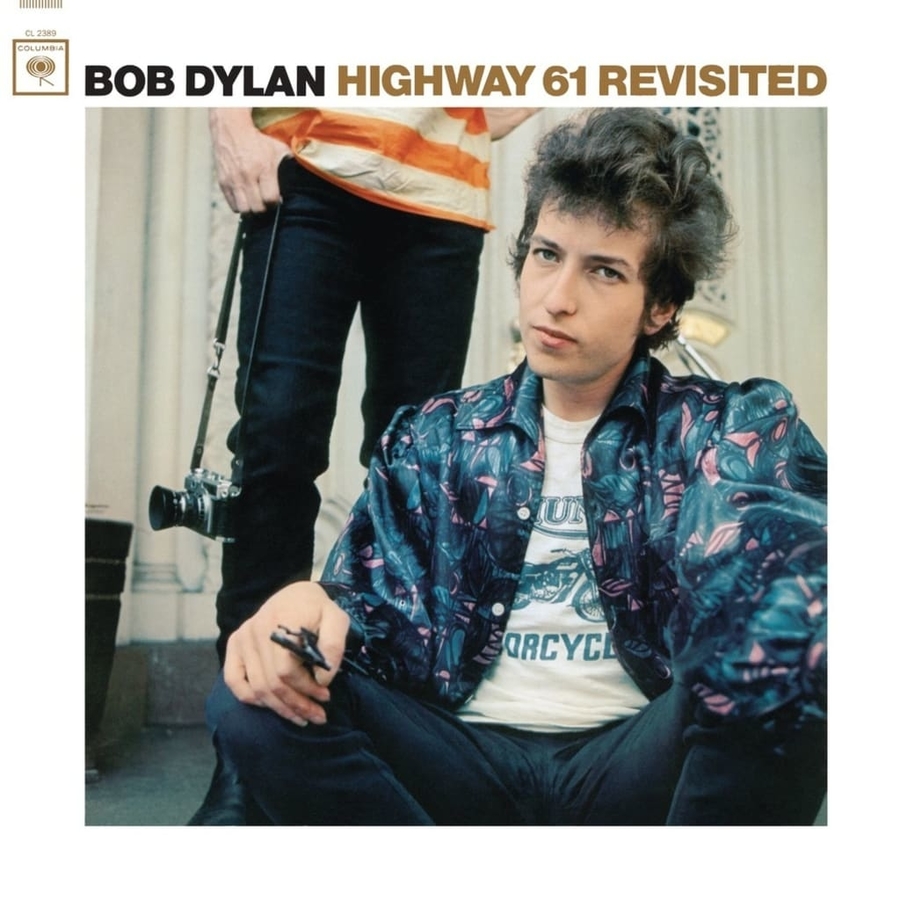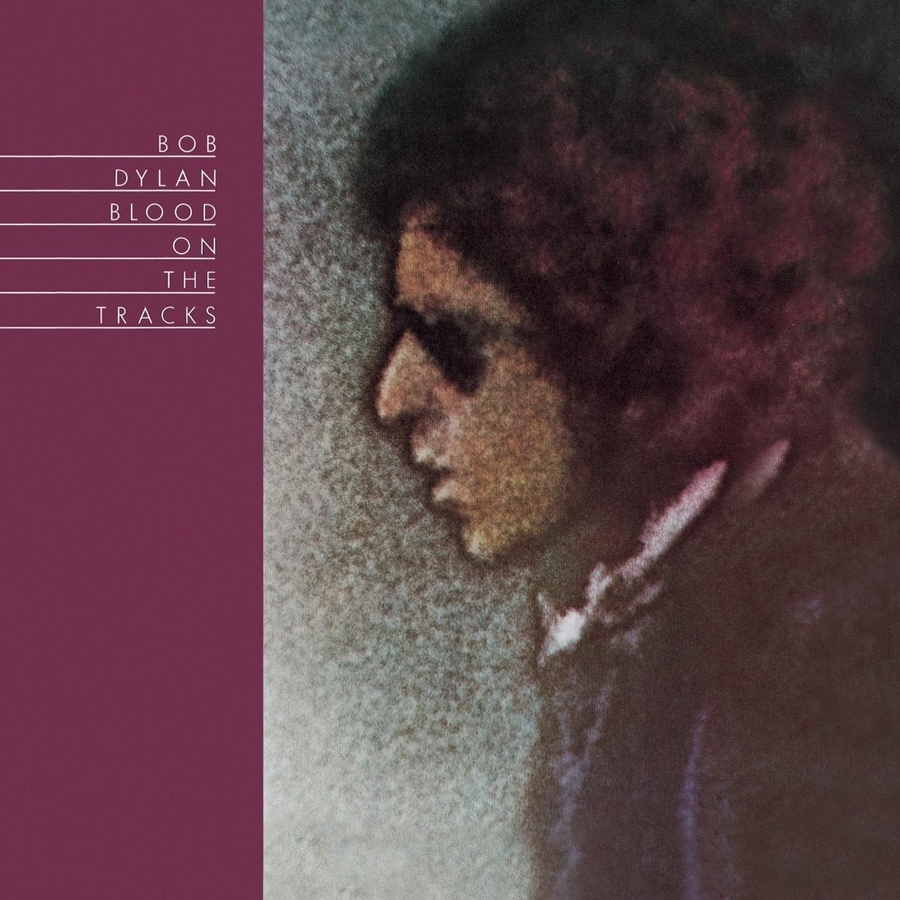It’s hard to nail down everyone’s favourite folk enigma, Bob Dylan. Socially conscious, yet lyrically ambiguous. He probably wouldn’t be such a discussed figure if he wasn’t so awfully cagey when explaining his own material, but I suppose that’s just part of the mystery and charm. The troubadour’s revolutionary contributions to the musical sphere can be heard through 39 studio albums, 763 tracks and over 55 hours of original sound.
With his return album Rough and Rowdy Ways out tomorrow, we’re about to get even more than we bargained for. But why are we still listening to his music? Well, he’s constantly referred to as the most important musician of the 20th century. It does, however, go a little bit deeper than that. From an unhealthy amount of listening, I’ve concluded that the five albums below are particularly resonant; the hallmarks of his career. There are more, but for sake of sanity, we’ll leave it at five. So without further ado, pour yourself some whisky, turn off the lights and don’t think twice. In no particular order, these are the five most timeless Bob Dylan records.

The Freewheelin’ Bob Dylan (1963)

Critics will say Dylan went on to do greater things, but this is where it really started for the song and dance man. The rawness, melodies and cutting emotion in this record are infinitely timeless. It’s worth mentioning how sparse this album initially sounds. There’s just an acoustic, harmonica and vocals; yet it’s all the more powerful for it. You needn’t look further than the opener, Blowin’ in the Wind. This anthem found itself rapidly latched onto by hippies and anti-war groups. It’s known as the biggest protest song of all time, though the ever-elusive Dylan would never claim it to be one.
The second track, Girl From The North Country, was later played alongside Johnny Cash, but dare I say he got it right the first time. Nostalgic lines like “I’m wondering if she remembers me at all” pierce deeper when sung alone. The other relationship cuts on this record are also excellent, including Don’t Think Twice, an understated tune of resignation. However, the political pull is what this album is known for. Songs like Masters of War and A Hard Rain’s A-Gonna Fall come to mind, with lyrics so cryptic, observant, and transporting.
So why is this album timeless? It’s not the production, the instrumentation, or even Dylan. It’s the universal themes, such as love, fear and power. They’re explored through brilliant poetry, without ever sounding preachy or clichéd. Dylan puts his unique reflection on every topic, and with every listen you’ll pick up something you didn’t last time.
Bringing It All Back Home (1965)

Zimmerman shatters his folk persona with this record. It only took three days to record, yet it disrupted the music scene like an earthquake. From the moment he opened the 1965 Newport Folk Festival with an electric guitar instead of an acoustic, it was game on. No longer the “spokesperson of a generation,” Dylan was now a “Judas,” as someone from the audience was quick to define. Oh, how times have changed.
Bringing it all back home is a blend of chaotic yet undeniably gripping rock/blues in its first half. It moves quickly and abrasively, dripping with wit. Just listen to the first few seconds of Bob Dylan’s 115th Dream and you’ll know exactly what I mean. At the risk of sounding like a broken record, the lyrics are so incredibly dense, and one probably couldn’t catch them all till quite a few drops of the needle. Turning over to the later songs of the album, there is an obvious switch back to the acoustic folk writing, with more minimal instrumentation. Arguably, it made the project slightly less forward moving, but Dylan had this acoustic-style so damn polished by the mid-60s, that it’s hard to complain.
The unplugged It’s Alright Ma gave us Dylan at his sharpest: “Darkness at the break of noon, shadows even the silver spoon, the handmade blade the child’s balloon, eclipses both the sun and moon”. Jesus. The ever-gorgeous Mr Tambourine Man gave us Dylan at his most vivid, “To dance beneath the diamond skies with one hand waving free, silhouetted by the sea”.
The timelessness of this album stems from Dylan’s code not to be bound by anyone’s expectations; something that weighs us all down sometimes. Dylan just embodies a ‘fuck it’ attitude with class. His fans are shoved into the back seat. Bringing It All Back Home is what fearlessness sounds like, unapologetically created. Just listen to the fittingly-titled closer, It’s All Over Now Baby Blue. “Strike another match, go start anew”.
Highway 61 Revisited (1965)

This is the release that made Dylan a star, but you already knew that. For the very first time in Dylan’s discography, Highway 61 Revisited featured no songs with just Dylan’s acoustic and voice. The album’s full force of amphetamine-riddled tracks created a perfect sounding, throttled aggression that embraced chaos and dissected downfall. These downfalls or human failures were often represented through people Dylan had a disdain for. In a 1965 press conference, a cigarette-loaded Dylan is asked why he is “pretty hard on the girl”, in his objectively best, most terrifying, riveting song, Like a Rolling Stone. He wittingly responds, “cuz I wanna needle them”.
There’s another popular figure Dylan “needles” in this record. In a rare minor key, alongside a plodding bassline, Dylan sneers in the second person about a Mr. Jones in Ballad Of A Thin Man. The song reeks of contempt, as Dylan points out the absurdity of a journalist (probably), who is stuck in his old ways, unable to make sense of counter-culture. “Something is happening here, and you don’t know what it is. Do you? Mr. Jones”.
Another unforgettable track is Highway 61 Revisited, where Dylan switches out the harmonica for a siren whistle. In case that wasn’t chaotic enough, this was a whistle Dylan supposedly blew during the recording sessions if a muso started doing drugs. The song revels in five stanzas, each with a ridiculous problem that can be solved on Highway 61. This is the very highway where blues musician Robert Johnson is said to have sold his soul to the devil. Don’t believe that this is a coincidence.
Highway 61 Revisited is a timeless album because of its rare ability to thoughtfully poeticise something that sounds so chaotic. There’s biblical references, anger, wit, confusion, and about a hundred other things. It’s a pot of songs that have well and truly boiled over the edge, and there’s enough meat inside to dissect for a lifetime.
Blonde on Blonde (1966)

Mixing Texas medicine with railroad gin might have been the greatest thing Dylan ever did, though he calls himself a “fool” for mixing them. This is one of many iconic images from double-album Blonde on Blonde, where Dylan continues upon the themes and sounds of Highway 61 Revisited. On this record, everything is taken to sizzling extremes. When he bites, he bites. Take the 3/4 classic, Just Like A Woman, where he sees that “she’s like all the rest, with her fog, her amphetamines and her pearls”. Brutal. But it isn’t just savagery, there’s plenty of teasing too. I’d recommend the satirical Leopard-Skin Pill-Box Hat, where he sees his girl “makin love with him. He forgot to close the garage door”. Brilliantly awkward.
With every emotion and every jest, this is Dylan exercising a peak of creativity. For every cut on the record, he takes a feeling and runs with it, with tight yet equally playful instrumentation. Mr Math Rock makes the soaring crescendos and jumpy keys on One of Us Must Know sound like pure freedom. And who can forget the vivid illustrations of obsession in his masterpiece Visions of Johanna. Only in Dylan’s peak time of restless creativity could he spit out lines such as “the ghost of electricity howls in the bones of her face”.
I’d say this is album is timeless, because, similarly to Bringing It All Back Home, it’s charged with liberation. Almost every song is fleshed out to its fullest, giving listeners a rewarding and fulfilling listening experience every time. The friskiness of the lyrical content matched with the gutsy folk-rock instrumentation was the closest Dylan every got to the “thin, wild mercury sound” he has in his head. Dylan’s words, not mine. No matter where you are in the walk of life, Blonde on Blonde can bring about a grin and remind you to find the feelings hidden in the bullshit.
Blood On The Tracks (1975)

Props to those who saw this slow train coming. This 1975 record is often cited as the best comeback album from Dylan, after a particularly unsuccessful patch of albums; namely Self Portrait. Dylan returns with an album presenting years of reflection and memories, with emotions ranging from regret to ragged anger. From Dylanologists all the way to new listeners, this is a record that sticks. Why? Because, amidst some melancholic New York studio sessions, drenched in wine and personal confusion, Dylan poured his blood into these tracks. Hence, Blood On The Tracks. It’s damn-near impossible to summarise this modern masterpiece, but if I had to, I would say it’s a monumental, bewildering story of an impending broken-relationship.
The centrepiece of the record is its opener, Tangled Up In Blue, which Dylan completed after a week of immersion in Joni Mitchel’s magnum opus and breakup album, Blue. It’s a song Dylan said, “took ten years to live, and two years to write”. It sounds it too. With two rotating chords at every verse, writing in both the first and third person and some signature Dylan imagery, he undoes time to tell a long story of a sticky relationship.
The same relationship is further uncovered throughout the album’s runtime. In the following track, Dylan blames his personal mess on “a simple twist of fate”, then later unleashes venom in the piercing Idiot Wind. You know there’s some seriously unresolved shit going on when he howls, “it’s a wonder that you still know how to breathe”. This suffering is further reflected upon, more calmly in Shelter From The Storm. Accompanied by a bouncing bass, Dylan seeks refuge from it all, imagining a place “where it’s always safe and warm”. Heavy stuff.
So, why does all this break-up pondering make the album timeless? Why do so many, young and old, still drop its name when the loungeroom demands musical discussion? I think it’s because we see an admittance of pain, drowning in it, which takes some unpleasant, self-honesty. Dylan still keeps specifics cryptic or hidden, but as Jeff Burger, author of Dylan on Dylan wrote, it’s still undoubtedly “raw and heartfelt”. Often, in broken relationships or uncomfortable realisations, there can be a languishing in it. When one’s life shifts gears, it’s important to understand it, develop honesty, and leave the “Idiot wind” behind you, if you must. For everyone, “the past is close behind” (Tangled Up In Blue), and here, Dylan seeks it. Finally ready, he turns to face it, as we all do in the roughest of times.



